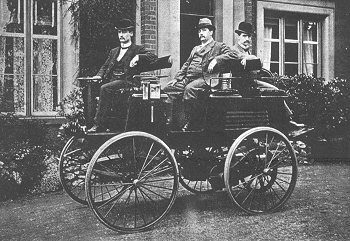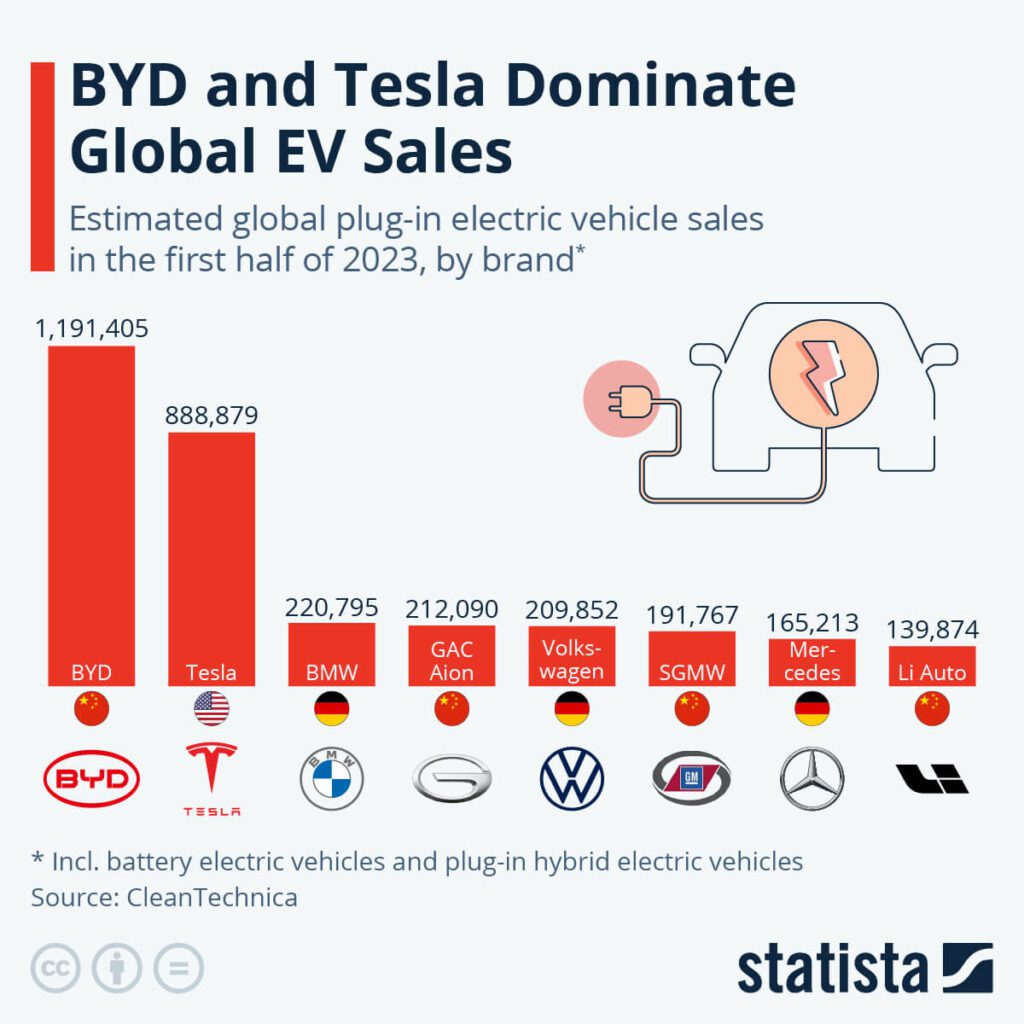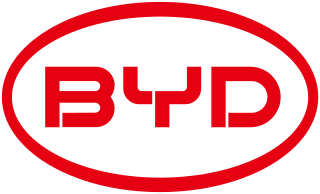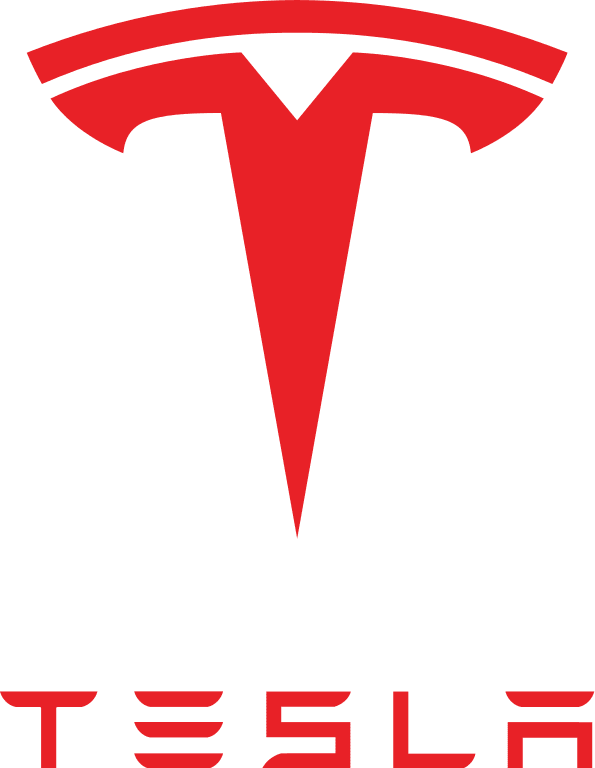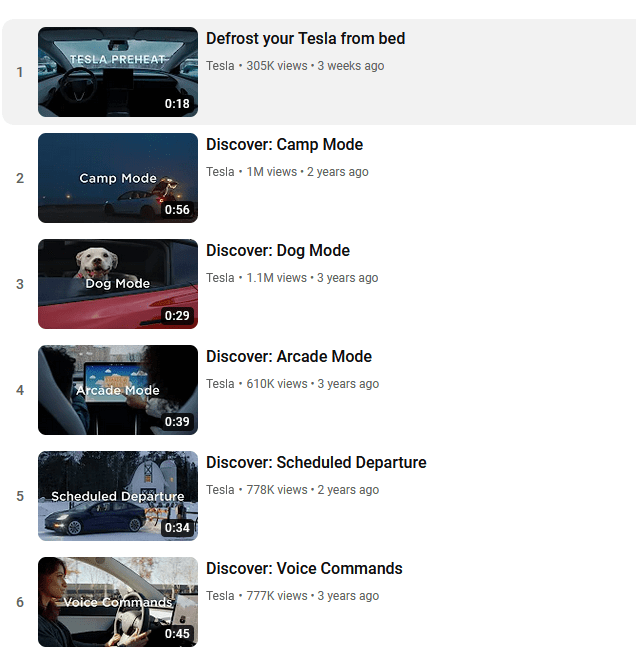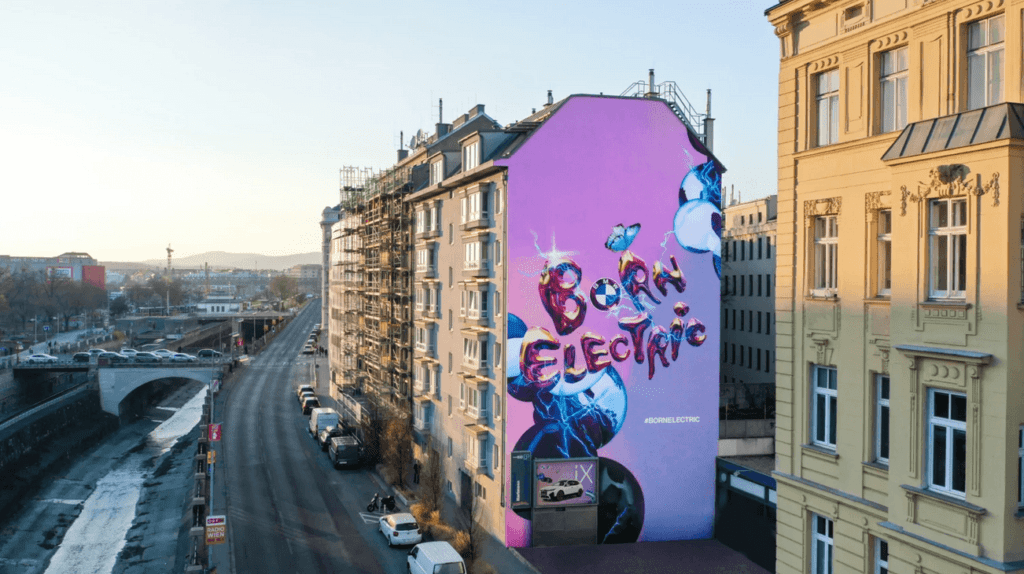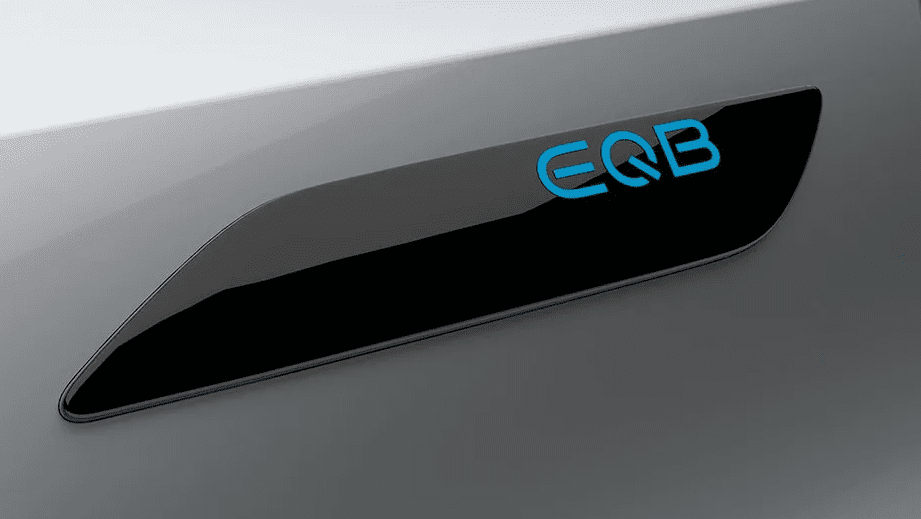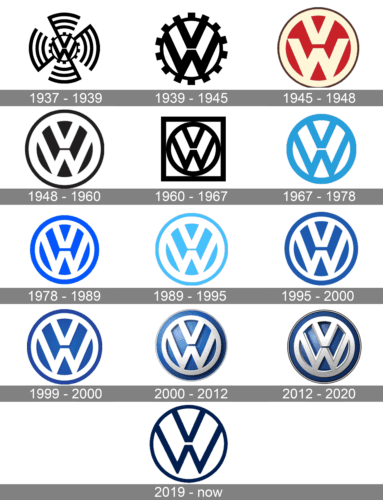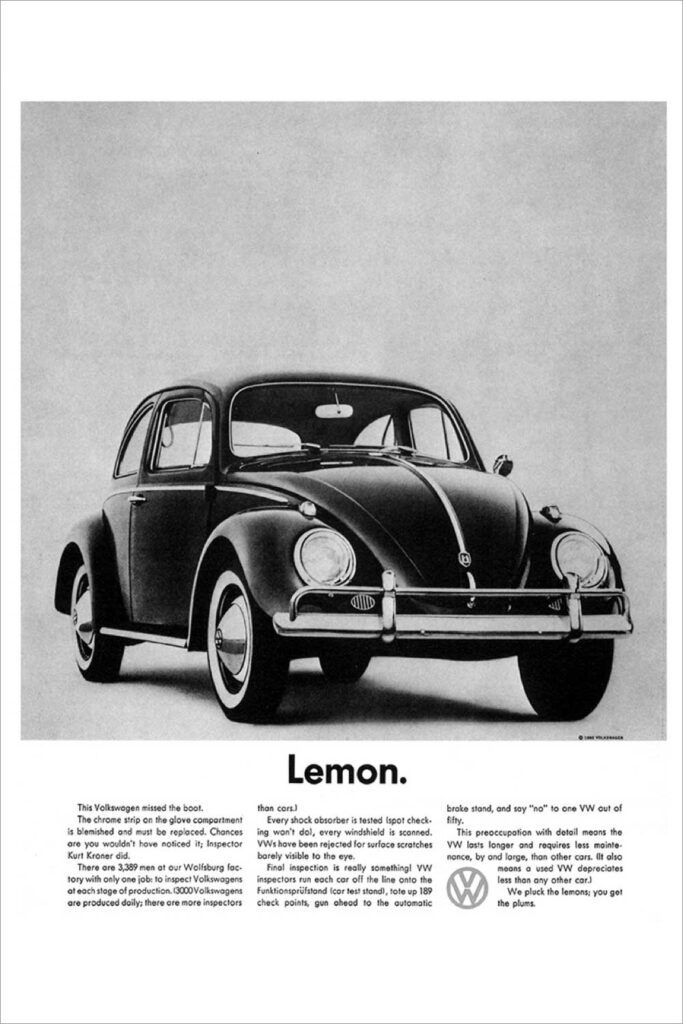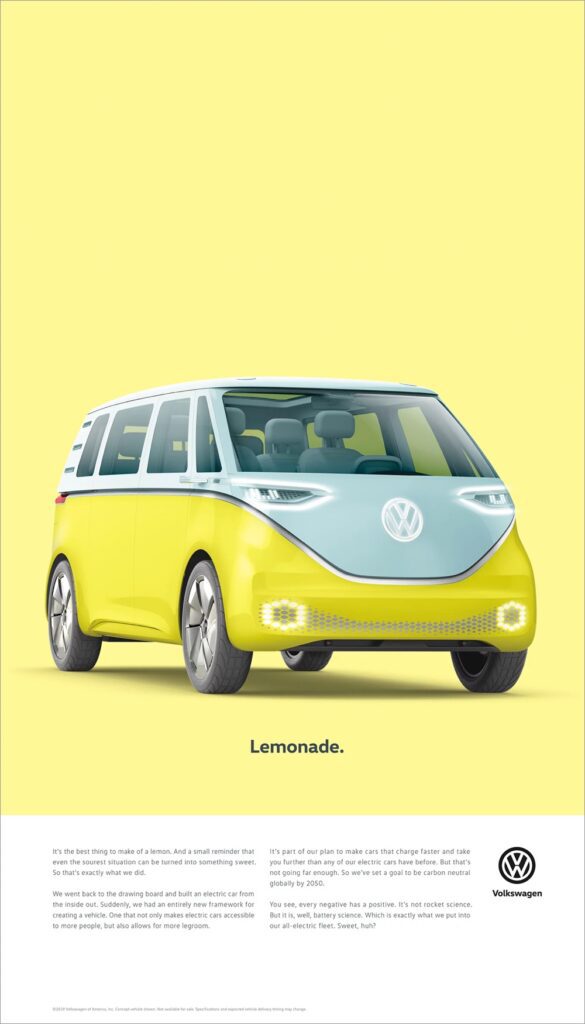Electric Vehicle Brands: The Logos & Looks of the Top EV Brands
Remember those grainy dystopian movies where electric vehicles ruled the roads? Well, that future is now! The world is shifting towards a more sustainable future, and electric vehicles are leading the change. The market is exploding with new electric vehicle brands and established players revving their engines to join the race.

But in this ever-evolving landscape, how do the new brands stand out from the crowd? How are the established ones carving their fresh identities for the new market? What marketing and branding strategies are powering their success? To unlock these secrets, let’s look under the hood and examine the logos and branding approaches of the powerful electric vehicle brands on the road.
Buckle up, and get ready for some quick branding inspiration! But first, let’s quickly discuss the state of the EV market, the facts behind the opening of this whole new world of possibilities.
From Niche to Norm: Understanding the Electric Vehicle Boom
According to Statista, about 14% of global emissions come from transportation. Enter the electric vehicle market, our chance to shift gears towards a cleaner, more sustainable future.
When we talk about electric vehicles, it sounds like a futuristic concept. But did you know that the first ever concept of electric vehicles was born in the 1820s when electricity-powered carriages were introduced? And the first electric car was built by Thomas Parker in 1884. Ironically, this was even before the first modern car was launched (in 1886) – the Benz Patent-Motorwagen.
However, it’s only recently that the electric vehicles market is booming. The video below from Statista gives a glimpse at the evolution of the EV market based on electric vehicle sales over the past few years. And some predictions for the near future as well. It clearly shows how quickly and drastically the sales have been picking up recently and how China and Europe seem to be leading the race.
So yes, the EV market is big – and there is ample scope for growth. A new market means new possibilities and new challenges too! So, how are electric vehicle manufacturers carving their niches? How are they defining their brands in this fast-paced industry? Let’s find out by analyzing some of the most popular electric vehicle brands in the world.
Electric Vehicle Brands: Branding Lessons From Their Logos & Branding Strategies
1. BYD
The below graph from Statista shows the dominant players in the electric vehicle segment. So, yes, we had to start the list with the market leader, BYD!
Brand overview
BYD – is an acronym for “Build Your Dreams”. BYD Auto is currently the leading electric vehicle brand and it belongs to the parent company BYD Company established in 1995. Whereas the auto brand itself was founded in 2003.
Let’s talk about the crux of the brand – starting with its logo.
The logo slightly resembles that of its parent company which consists of the letters enclosed in an ellipse.
As can be seen, while there are some similarities, the brand chose to create a fresh new personality with its automobile brand’s identity.
The lettermark logo in vibrant red capturing the energy and passion of the electric vehicles segment also features a futuristic typeface. The customized font sans sharp edges keeps the design approachable and consumer-friendly. The design also skips the ellipse possibly to capture the dynamism of BYD Auto or even the brand’s openness to change.
On the whole, this modern design accurately communicates that this is a brand built for the future!
Now, let’s look at a few branding and marketing strategies that have helped BYD emerge as a market leader.
Brand pivot at the right time
The above graph shows how BYD initially focused primarily on combustion engine vehicles but then rapidly pivoted when the market for electric vehicles began to boom. This timely pivot and gradual phasing out of combustion engine vehicles to fully focus on electric vehicles has helped BYD to grow into one of the most popular electric vehicle brands in the world.
Clear brand values
The BYD Company on the whole prides itself on focusing on creating a Zero Emissions Energy Ecosystem. Their commercials for electric vehicles and social media campaigns have also aligned with establishing these brand values. Their clear focus on creating a greener future is evident in their ads and marketing designs which helps build stronger connections with their customers.
Show more than tell
BYD participated in COP28, the 28th United Nations Climate Change Conference. This demonstrates the brand’s global sustainability leadership, showcasing its decade-long commitment to sustainability through innovative ecological projects.
Through measures like these BYD authentically establishes itself as a market leader in sustainability. This “show, don’t tell” approach builds brand authenticity as well!
Now, let’s talk about the next big player, one of the globally acclaimed electric vehicle brands, Tesla.
2. Tesla
Brand overview
Founded in the same year as BYD Auto, Tesla was one of the first automobile brands to focus solely on electric vehicles.
Let’s now talk about the Tesla logo, the emblem that has become an icon in the electric vehicles segment.
Ever since its launch, the Tesla logo has remained pretty much the same. The signature T monogram is the most memorable element in the logo. It not only represents the “T” in “Tesla” but is also reportedly meant to represent the cross-section of an electric motor, based on Elon Musk’s Tweet below. Considering that
Similar to SpaceX, the T is like a cross section of an electric motor, just as the X is like a rocket trajectory
— Elon Musk (@elonmusk) January 19, 2017
Like BYD, the Tesla logo also features a futuristic customized typeface to embrace the modernity associated with the segment. The angular strokes, and the open strokes in the letters E and A are some of the distinguishable elements in the wordmark of the Tesla logo. While there is no solid reason known for these details, these could possibly represent the brand’s focus on disrupting the industry and pushing boundaries.
So, how did Tesla grow to become one of the hottest electric vehicle brands in the world?
Focusing on their tech-savvy personality
When you think of a technology-loaded car, you probably think of a Tesla. That’s because, over the years, the brand has positioned itself as a technology-forward brand.
This approach attracts tech-savvy and forward-thinking consumers who appreciate pioneering efforts. Examples include focusing on autonomous driving, launching rockets, and constantly upgrading their vehicles’ features. Take the below commercial for example.
Or the array of videos on their YouTube channel dedicated to the quirky yet fun features of the Tesla cars that make driving the cars as well as traveling in them so much more exciting.
Fostering a passionate brand community
Tesla is big on fostering a brand community. Take their referral program for example. By incentivizing existing owners to recommend Tesla to their networks, they tap into the powerful force of word-of-mouth marketing. This has been the biggest driver of the brand’s popularity over the years.
Refer a friend to buy a new Model 3 or Y using your referral link & give them $500 off (local currency equivalent)
— Tesla (@Tesla) July 9, 2023
You’ll receive up to 10k credits that can be redeemed for Supercharging, software upgrades & more
→ https://t.co/NTm3264ovd pic.twitter.com/gJ5QIUPZoB
3. BMW i
Brand overview
This one’s very different from the other electric vehicle brands we discussed so far because this one is a sub-brand of an already existing automobile leader. So, the branding, the logo, and the marketing strategies here are all meant to create a different identity without diluting the existing brand.
Take the logo for example. Instead of going with a whole new logo, BMW chose to augment the existing one with an “i” for “innovation”. And with the motto “Born Electric”
A clear brand vision for the brand
From the time of their launch, they had been spotlighting “visionary design” as one of the USPs of the BMW electric cars. The below video, for example, was from the 2011 International Motor Show (IAA) when the brand ventured into the electric automotive segment. This was one of the first events that established BMW as one of the leading electric vehicle brands.
The video explains the brand’s innovation in keeping the design futuristic and practical to appeal to the urban crowd. For the launch, as you can see, they introduced an electric sports model concept and laid their foundation strongly.
Showing what the brand stands for
The below image shows an outdoor mural that BMW created to advertise their electric vehicles range. Instead of just talking about it, the brand showed it in action by replacing the traditional processes involved in outdoor advertising with an emission-free process.
Switching diesel cranes with electric vehicles, using ecological emission-free paints, and lighting the mural with green electricity are a few notable details about this campaign that made it stand out.
4. Mercedes EQ
Brand overview
Mercedes is also growing quickly to claim their spot as one of the top electric vehicle brands with their EQ range. They currently use EQ which reportedly stands for “electric intelligence” to represent their electric vehicle range. Rumor has it that the brand might soon be dropping the EQ tag from the name and we’re curious to see what that rebranding would look like.
But for now, as you can see, the typeface used here is a sharp contrast to the traditional serif typeface used in the Mercedes-Benz logo. This design language sets the range apart from their internal combustion engine counterparts. However, similar to the original Mercedes-Benz logo, this one also takes a minimalistic approach.
Other than that, the brand also adopts subtle differences in its approach to the marketing and branding designs for the EQ range.
A refreshed modernity
When it comes to brand messaging, the original Mercedes-Benz brand focuses on luxury, and their signature typeface is just one of the iconic elements that establish this. The brand chose to leave this behind and don a more youthful and contemporary aesthetic to keep up with the other electric vehicle brands. And the logo also uses blue which is one of the most popular colors in the industry.
Creating an air of mystery
For the launch of the Mercedes EQS, the brand chose to create a surreal film set in a breathtaking, blue-hued landscape. This theatrical spectacle captured global attention and sparked curiosity about the new vehicle.
With this, the brand leveraged emotional storytelling, and symbolism with the surreal landscape representing a move toward a cleaner future.
The gradual reveal and limited focus on the specification in this commercial deviates from the brand’s usual approach of focusing on the technical specifications and features in most of their product reveals. Campaigns like this one show how Mercedes manages to differentiate their EQ brand from their core brand.
5. Volkswagen
Brand overview
Unlike the other electric vehicle brands from established automobile manufacturers, Volkswagen did not introduce a fresh logo to create a separate identity. Instead, the company rebranded the main brand to welcome the change in the brand’s objectives and approach.
The current logo is a flat design, without the chrome effect for a three-dimensional effect that the previous version featured. Take a look at the below image to see what else changed with the new logo.
As can be seen, they opted for a more minimalistic and easy-to-use design this time. The design is also more open with the W not touching the circle boundary in the logo. All of these nuances are meant to capture the paradigm shift within the company. Additionally, the modernity of the design also aligns the logo with the industry standards.
Now, let’s talk about a few campaigns and branding decisions that helped Volkswagen become one of the most influential electric vehicle brands in the world.
Going electric for all the right reasons
Even the biggest brands in the world have had their share of downfalls. It’s all about how they reacted and bounced back! Volkswagen is one of the notable names in this category. Why are we talking about this now? Because Volkswagen’s decision to shift focus toward electric vehicles originated from a historic scandal that shook the automotive sector.
Here’s an outline:
In 2015 Volkswagen emissions scandal, nicknamed Dieselgate created ripples in the world of automobiles. The gist is that the United States Environmental Protection Agency (EPA) found that Volkswagen had supposedly programmed their vehicles to pass laboratory emission tests. The brand was found to be in violation of the Clean Air Act.
In 2017, the company announced Roadmap E, marking their first big investment in electrical mobility.
In 2019, the first-ever car in the ID series, Volkswagen’s electric vehicle brand was launched.
Finally, in 2020, Volkswagen underwent major rebranding introducing their new logo. This was meant to embrace the change after Dieselgate as well as to represent the brand’s shifted focus on electric vehicles.
Effortlessly tying back to the brand’s legacy
Despite their few setbacks, the Volkswagen brand has had an overall positive brand image and a strong position in the world of advertising. Take their iconic Lemon print ad for example. This was an ad that strongly positioned the brand in the American market. The one-word headline “Lemon” was for the brand’s Think Small campaign designed to promote the Beetle.
With a witty approach, the ad was crafted to capture the brand’s focus on quality control and it soon grabbed its place in the history of advertising as one of the most creative and memorable ads.
Since this ad marked a major milestone in the brand’s history, Volkswagen chose to recreate the magic with their Lemonade ad as seen in the image below.
A similar design, similar copy, and headline, but only this time the message was about their electric cars.
KIMP Tip: This ad is a reminder that catchy visuals and the right copy together can create something that carries your brand’s legacy onward for years. So to create this kind of impact on your audience, focus on creating a strong visual style for your brand and ensure that your visuals align with your brand’s tone of voice.
Bring Your Brand to Life With Designs by KIMP
From bold newcomers to established players adapting their game, we’ve explored how electric vehicle brands are navigating the exciting world of EVs. Whether crafting entirely new identities or skillfully expanding existing ones, each brand tackles the challenge with fresh perspectives. We hope this exploration has sparked your own branding inspiration!
Ready to embrace these new strategies and craft a message that resonates? Unlimited design services like KIMP can be your partner in this journey. With endless design options and revisions, you can refine your ideas and visuals until they perfectly deliver your message with impact. Take the first step – register now for a free 7-day trial and unlock the potential of unlimited design!

